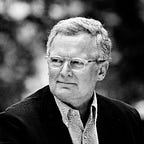Henri Matisse, Pablo Picasso and the Future of Work
Pablo Picasso visited Henri Matisse often during the spring of 1946. Matisse was pleased to see him. Matisse was 76 and had endured arduous colon surgery. Much of his work was now done either in bed or from a wheelchair. Simon Schama tells tells the story that after one of these visits Henri Matisse wrote to his son Pierre: “Picasso came to see me with a very pretty young woman. He could not have been more friendly and said he would come back and have a lot of things to tell me. But he saw what he wanted to see, my works in cut paper, my new paintings. That’s all he wanted. He will put it all to good use in time.”
Art historians claim that the relationship between Picasso and Matisse was by turns fraternal and competitive. It was a kind of an on going sparring match between two masters.
The new technological environment of business has something in common with the world of Picasso and Matisse. It is marked by conflicting constraints, variables that shift very rapidly and value-creating relationships that change constantly. It is a complex environment.
In complex environments, the way to proficiency is to recombine successful elements to create new versions, some of which may thrive.
As a result, not just the user interfaces, but the operating system of work is starting to change in a radical way. The traditional industrial approach to work was to require each worker to assume a predetermined responsibility for a specific role. The new approach represents a different logic of organizing based on neither the traditional market nor a process. Whereas processes involve relations based on dependence and markets involve relations based on independence, the new networks involve relations of dynamic interdependence. A bit like Matisse and Picasso.
Minimal hierarchy, organizational diversity and responsiveness characterize these architectures. They are a necessary response to the increasing fuzziness of strategic horizons and short half-life of designs. Because of greater complexity, coordination cannot be planned in advance. Authority needs to be distributed; it is no longer delegated vertically but emerges horizontally. Under distributed authority work teams and knowledge workers need to be accountable to other work teams and other knowledge workers. Achievement depends on learning by mutual accountability and responsiveness.
Management and strategy used to be about rational choice between a set of known options and variables. The variables of creative work and complex environments have increased beyond systems thinking and process design. Under circumstances of rapid technological change, the management challenge is to create openness to possibilities and plausible options.
Success is based on continuous redefinition of the organization itself. It is about recombining options and contributions in a competitive and cooperative environment. Creativity is the default state of all human work. Even the most creative people are more remixers of other peoples’ ideas than lone inventors. Technology and development in general are not isolated acts by independent thinkers, but a complex storyline.
The democratization of technology that is taking place at the moment does not determine social and organizational change, but does create new opportunity spaces for new social practices. The opportunity we have is in new relational forms that don’t mimic the governance models of industrial firms. Network theory suggests that what the system becomes emerges from the complex, responsive relationships of its members, continuously developing in communication.
Like Henri Matisse and Pablo Picasso.
